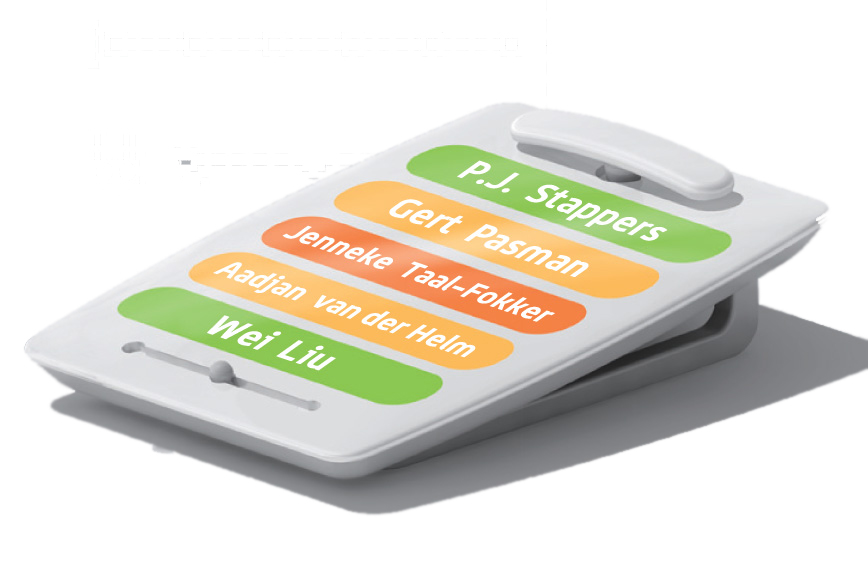Ubiquitous smartphones, tablets and game consoles have made people accustomed to instantaneous, interactive and multimedia exchange of information.
One object has been remarkably insusceptible to the ICT revolutions of the last twenty years: the office phone. Although lighter than before, it is basically still a black box on a wire with lots of buttons, most of which are not understood let alone used.
In his PhD research at the faculty of Industrial Design and Engineering Dr. Wei Liu developed a next-generation office phone, which allows a more playful, flexible and expressive interaction. He called it the YPhone after the generation Y: youngsters born between 1980-2000 who are the first generation of ‘digital natives’ and accustomed to new, more expressive and natural ways of interacting with digital equipment. This new interaction is characterised by the words instant, playful, collaborative, expressive, responsive and flexible.
For example, the YPhone prototype will sense if you’re at your desk and signal your availability in colour code (green/yellow/red) in the shortlist of names on the other phones. It will also sense when there are more people at your desk and change your availability status into yellow (‘busy’). To dial, you can still type in numbers on a keyboard, but you can also switch (by moving a magnetic ball) to a name list, which you then can flip through with hand gestures that the Yphone will detect.
Pick up the tiny wireless headset and press a name to make contact. Press hard, and the person will know it’s an urgent call. Let’s hope that ICT firm Exact will continue the Yphone development. It might make calling more fun than mailing.
Watch the demo at: bit.ly/1lgzPg4



Comments are closed.